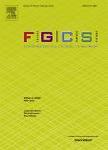版权所有:内蒙古大学图书馆 技术提供:维普资讯• 智图
内蒙古自治区呼和浩特市赛罕区大学西街235号 邮编: 010021

作者机构:Univ Salamanca BISITE Res Grp Calle Espejo 2 Salamanca 37007 Spain IoT Digital Innovat Hub Spain Air Inst Calle Segunda 4 Salamanca 37188 Spain Osaka Inst Technol Dept Elect Informat & Commun Fac Engn Osaka 5358585 Japan Univ Malaysia Kelantan Pusat Komputeran Informat Karung Berkunci 36 Kota Baharu 16100 Kelantan Malaysia Univ Salamanca Dept Appl Math Calle Parque 2 E-37008 Salamanca Spain Univ Salamanca Inst Fundamental Phys & Math Dept Appl Math Calle Parque 2 E-37008 Salamanca Spain INRS EMT 800 Gauchetiere OuestBur 6900 Montreal PQ H5A 1K6 Canada
出 版 物:《FUTURE GENERATION COMPUTER SYSTEMS-THE INTERNATIONAL JOURNAL OF ESCIENCE》 (下代计算机系统)
年 卷 期:2020年第102卷
页 面:965-977页
核心收录:
学科分类:08[工学] 0812[工学-计算机科学与技术(可授工学、理学学位)]
主 题:IoT Complex networks Clustering Layer slicing Algorithm design Data quality
摘 要:With its strong coverage, low energy consumption, low cost and great connectivity, the Internet of Things technology has become the key technology in smart cities. However, faced with a large number of terminals, the rational allocation of limited resources, the topology and non-uniformity of smart buildings, the fusion of heterogeneous data become important trends in Internet of Things research. As a result, this paper proposes a novel technique for processing heterogeneous temperature data collected by an IoT network in a smart building and transforms them into homogeneous data that can be used as an input for monitoring and control algorithms in smart buildings, optimizing their performance. The proposed technique, called IoT slicing, combines complex networks and clusters in order to reduce algorithm input errors and improve the monitoring and control of a smart building. For validating the efficiency of the algorithm, it is proposed as a case study using the IoT slicing technique to improve the operation of an algorithm to self-correct outliers in data collected by IoT networks. The results of the case study confirm, irrefutably, the effectiveness of the proposed method. (C) 2019 Elsevier B.V. All rights reserved.